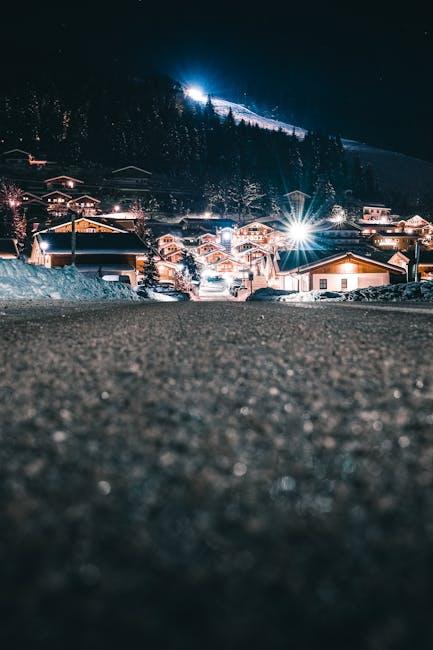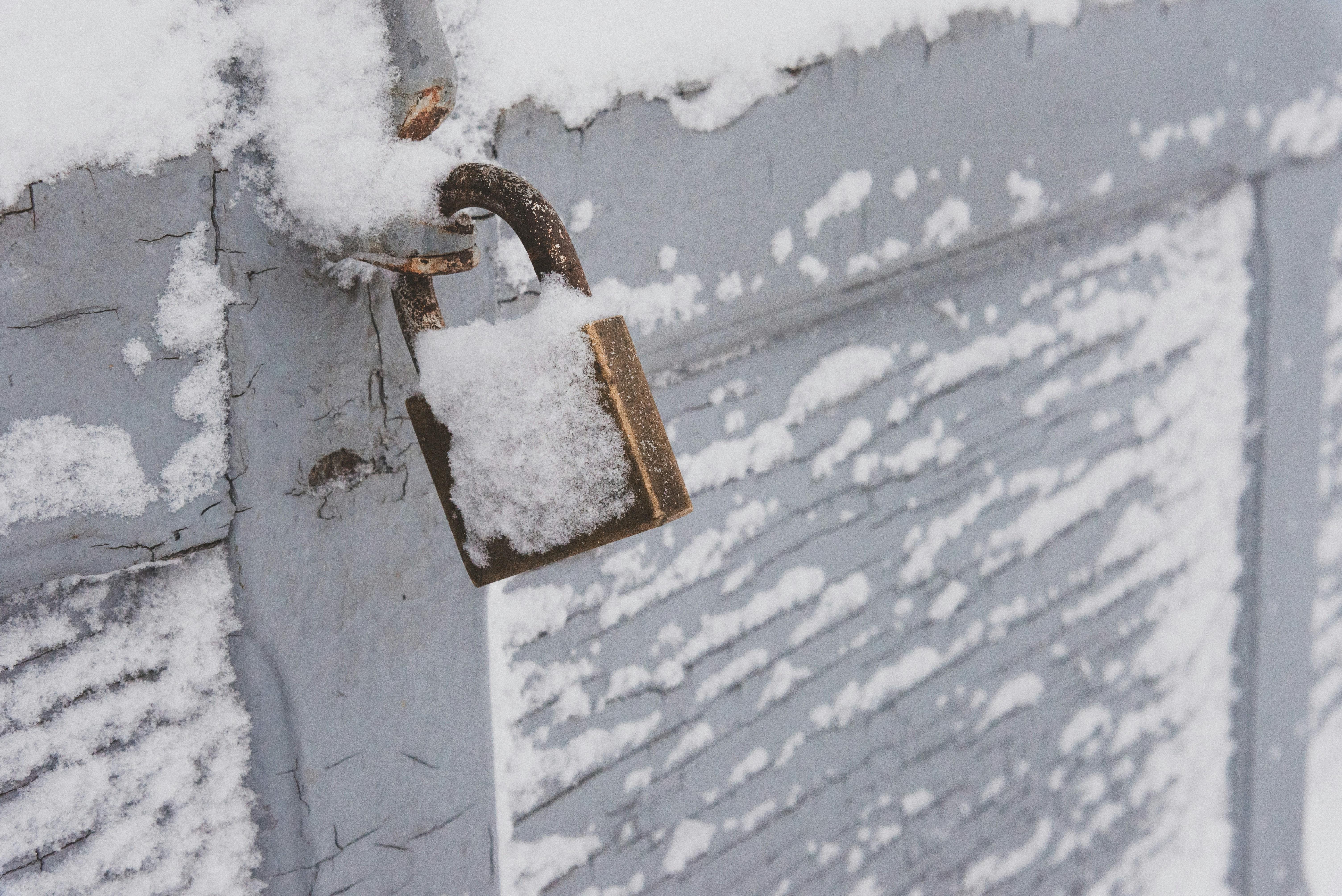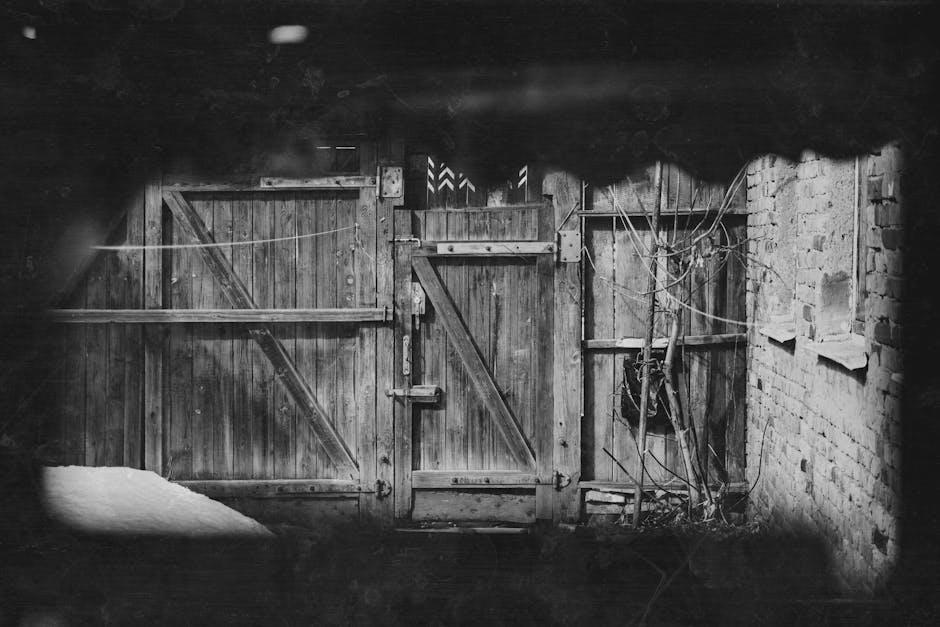As the chill of winter descends upon the Twin Cities, the season brings more than just frosty mornings and snowy sidewalks-it also challenges the security and functionality of your home’s locks. When temperatures plunge and ice settles, a standard lock can become stiff, sticky, or even freeze shut, leaving you stranded outside or compromising your home’s safety. In this article, we explore the best winter-proof locks designed to withstand the harsh Minnesotan cold, ensuring your home remains secure and accessible no matter what the weather throws your way. Whether you’re upgrading your old locks or planning new installations, finding the right winter-ready solution is key to peace of mind all season long.
Table of Contents
- Understanding the Challenges Winter Brings to Residential Locks
- Key Features to Look for in Winter-Resistant Lock Mechanisms
- Top Lock Types Proven to Withstand the Twin Cities Cold
- Installation Tips for Ensuring Maximum Winter Durability
- Maintenance Strategies to Keep Your Locks Reliable All Season
- Q&A
- Final Thoughts

Understanding the Challenges Winter Brings to Residential Locks
As temperatures plunge in the Twin Cities, residential locks face an onslaught of winter-related challenges that can compromise both security and functionality. One of the most common issues is lock freezing, caused by moisture trapped inside the mechanism that turns into ice. This can render locks immobile, leaving homeowners locked out in frigid conditions or, worse, vulnerable to forced entry when locks are forcibly manipulated. Additionally, the cold air can cause metal components to contract and become brittle, increasing wear and tear. Snow and ice accumulation further exacerbate these problems, adding weight and pressure that can misalign lock parts or break delicate internal springs.
Maintenance and lock selection become crucial during these icy months. Homeowners should prioritize features such as:
- Weather-resistant coatings that prevent rust and corrosion
- Sealed internal components to keep moisture out
- Materials designed for extreme cold, like stainless steel or brass alloys
- Keyless or smart lock options which reduce the risk of mechanical failure caused by frozen keys or cylinders
| Winter Lock Challenge | Impact | Recommended Feature |
|---|---|---|
| Lock Freezing | Key won’t turn; lock jammed | Sealed internal mechanism |
| Metal Contraction | Parts become brittle or misaligned | Durable cold-resistant materials |
| Moisture & Corrosion | Rust and difficulty in operation | Weather-resistant coating |
| Snow/Ice Buildup | Physical damage or blockages | Smart locks/Keyless entry |

Key Features to Look for in Winter-Resistant Lock Mechanisms
When choosing locks that can brave the Twin Cities’ harsh winters, durability against cold and moisture is paramount. Look for mechanisms crafted with rust-resistant metals such as stainless steel or brass, which maintain functionality even after repeated exposure to snow and ice. Additionally, weatherproof seals and covers are essential to block out moisture and prevent freezing. Locks with self-lubricating components or those compatible with silicone-based lubricants ensure smooth operation when temperatures drop below freezing.
Aside from materials, the design plays a critical role in winter resilience. Opt for locks that feature:
- Protected keyways to prevent ice build-up blocking the cylinder
- Enhanced internal mechanisms engineered to resist jamming
- Low-maintenance finishes to reduce corrosion over time
- Compatibility with heated or insulated lock boxes for extreme cold
| Feature | Benefit |
|---|---|
| Rust-resistant Metals | Long-lasting performance despite moisture |
| Weatherproof Seal | Prevents water intrusion and freezing |
| Self-lubricating Mechanisms | Smooth function in sub-zero temperatures |
| Protected Keyways | Reduces ice blockage and key jams |

Top Lock Types Proven to Withstand the Twin Cities Cold
When it comes to securing your home in the frosty winters of the Twin Cities, not every lock stands the test of icy temperatures and fluctuating moisture. Opting for weather-resistant locks can save you from the hassle of frozen tumblers and jammed keys. High-quality stainless steel deadbolts and brass cylinder locks are renowned for their durability and rust resistance, ensuring smooth operation year-round. Additionally, smart locks with sealed electronic components are gaining popularity as they are designed to endure environmental challenges without compromising on security or convenience.
Consider these top performers, each engineered to thrive in cold climates:
- Double-cylinder deadbolts – Offers extra security with keys required on both sides, ideal for frost-prone doors.
- Electronic keypad locks – No worries about frozen keys since access is keyless and codes can be updated anytime.
- Weatherproof padlocks – Perfect for gates and sheds, they feature protective coverings to block snow and ice ingress.
| Lock Type | Cold Resistance | Maintenance Needed |
|---|---|---|
| Stainless Steel Deadbolt | High | Low |
| Brass Cylinder Lock | Medium | Medium |
| Electronic Keypad Lock | High | Low (battery check) |
| Weatherproof Padlock | High | Low |

Installation Tips for Ensuring Maximum Winter Durability
When installing locks for winter protection, it’s essential to prioritize materials and designs that resist freezing temperatures and moisture buildup. Opt for locks made from stainless steel or brass, as these metals withstand corrosion better than others. Sealing mechanisms like weatherstripping or rubber gaskets around the lock can prevent water ingress, significantly reducing the risk of ice forming inside the locking components. Additionally, consider installing locks with smooth, covered keyways that block snow and debris from clogging the interior.
Proper alignment and lubrication play a critical role in durability during the cold months. Before winter sets in, double-check that your locks are properly aligned with their strike plates-misalignment can cause jamming when metal contracts in the cold. Use a high-quality silicone-based or graphite lubricant to keep internal parts moving freely without attracting dirt or moisture. Here’s a quick guide to essential winter lock installation practices:
- Material Selection: Choose weather-resistant metals like stainless steel or brass.
- Sealing: Use rubber gaskets and weatherstripping to block moisture.
- Alignment Check: Ensure lock and strike plate are precisely aligned.
- Lubrication: Apply silicone-based/graphite lubricant for smooth operation.
- Shielded Keyways: Opt for locks with covers to keep out snow and debris.
| Component | Winter Installation Tip | Benefit |
|---|---|---|
| Lock Body | Use stainless steel or brass | Resists corrosion and freezing |
| Keyway | Install a protective cover | Keeps snow and debris out |
| Strike Plate | Check and adjust alignment | Prevents jamming from cold contraction |

Maintenance Strategies to Keep Your Locks Reliable All Season
To ensure your locks stand strong against the Twin Cities’ harsh winter conditions, regular upkeep is essential. Start by lubricating your locks every few months using a graphite-based lubricant or a silicone spray, which won’t attract dirt or grime like oil-based products. This simple step keeps the internal mechanisms moving smoothly, preventing freezes that can jam your lock during subzero temperatures. Additionally, always wipe down the exterior of your locks to remove moisture or road salt, which can corrode metal parts over time.
Another key practice is to protect your locks from environmental stressors with weatherproof accessories. Consider installing lock covers or shields that block wind and snow buildup. If your front door is prone to drafts, a well-fitted door sweep helps minimize cold air infiltration, which might impact lock performance. Below is a quick guide highlighting essential maintenance tasks to keep your locks in top-notch shape:
| Maintenance Task | Frequency | Benefit |
|---|---|---|
| Lubricating locks | Every 3 months | Prevents freezing and sticking |
| Cleaning exterior | Monthly | Removes corrosive salt & debris |
| Installing lock covers | Seasonally | Shields against snow and wind |
| Inspecting door seals | Before winter | Minimizes cold air exposure |
Q&A
Q&A: Winter-Proof Locks – Best Options for Twin Cities Homes
Q1: Why do Twin Cities homeowners need winter-proof locks?
A1: The Twin Cities experience harsh winters with freezing temperatures, ice, and snow, all of which can cause traditional locks to freeze, jam, or become brittle. Winter-proof locks are specifically designed to withstand these conditions, ensuring your doors remain secure and accessible even in the coldest months.
Q2: What features make a lock suitable for Twin Cities’ winter weather?
A2: Key features of winter-proof locks include weather-resistant materials (like stainless steel or brass), a design that prevents ice buildup (such as covered keyways), and lubricants or coatings that reduce freezing. Some advanced models also incorporate anti-freeze technology or heated elements to keep the mechanism functioning smoothly.
Q3: Are smart locks a good winter-proof option?
A3: Many smart locks are built with weather resistance in mind and can handle cold climates if chosen carefully. Look for models rated for extreme temperatures, with sealed electronics and weatherproof casings. However, battery performance can suffer in cold weather, so it’s important to check battery status regularly or choose models with external power options.
Q4: How can homeowners maintain their locks to prevent winter issues?
A4: Regular maintenance includes cleaning the lock to remove dirt and debris, applying a dry lubricant (like graphite) rather than oil-based ones, and installing lock covers or shields to protect from snow and ice. It’s also wise to test your locks before winter sets in, so you can address any problems early.
Q5: What are some recommended brands or types of winter-proof locks for the Twin Cities?
A5: Trusted brands like Schlage, Kwikset, and Medeco offer models with enhanced weather resistance. Deadbolts with hardened steel bolts and covered keyways are particularly effective. For added security, consider locks with anti-drill and anti-pick features that don’t sacrifice winter durability.
Q6: Can winter-proof locks also improve overall home security?
A6: Absolutely. Winter-proof locks often incorporate advanced materials and designs that enhance both weather resistance and security. Choosing a robust, weather-safe lock not only protects your home from the elements but also safeguards against break-ins, making it a smart investment year-round.
Q7: What’s the best way to install winter-proof locks in harsh climate regions?
A7: Professional installation is recommended to ensure proper fit and seal against the elements. A locksmith familiar with the Twin Cities climate can advise on lock placement, weatherproofing techniques, and complementary hardware like storm doors or seal strips to maximize protection.
Q8: Are there budget-friendly winter-proof lock options for homeowners?
A8: Yes! While premium locks offer top-tier features, many mid-range options provide excellent weather resistance and security without a hefty price tag. Look for reputable brands with solid warranties and positive customer reviews focused on cold climate performance.
Whether you’re braving a snowy Minnesota winter or preparing ahead, selecting the right winter-proof locks is essential for keeping your Twin Cities home safe, secure, and accessible all season long.
Final Thoughts
As the chill of winter tightens its grip on the Twin Cities, securing your home with the right locks becomes more than a precaution-it’s peace of mind wrapped in cold-weather resilience. Choosing winter-proof locks isn’t just about withstanding frost and ice; it’s about ensuring your sanctuary remains safe and accessible, no matter how deep the snow piles or how biting the wind. With the options outlined here, Twin Cities homeowners can confidently face the season ahead, knowing their locks are ready for winter’s toughest tests. Stay secure, stay warm, and let your home be a fortress against the cold.




